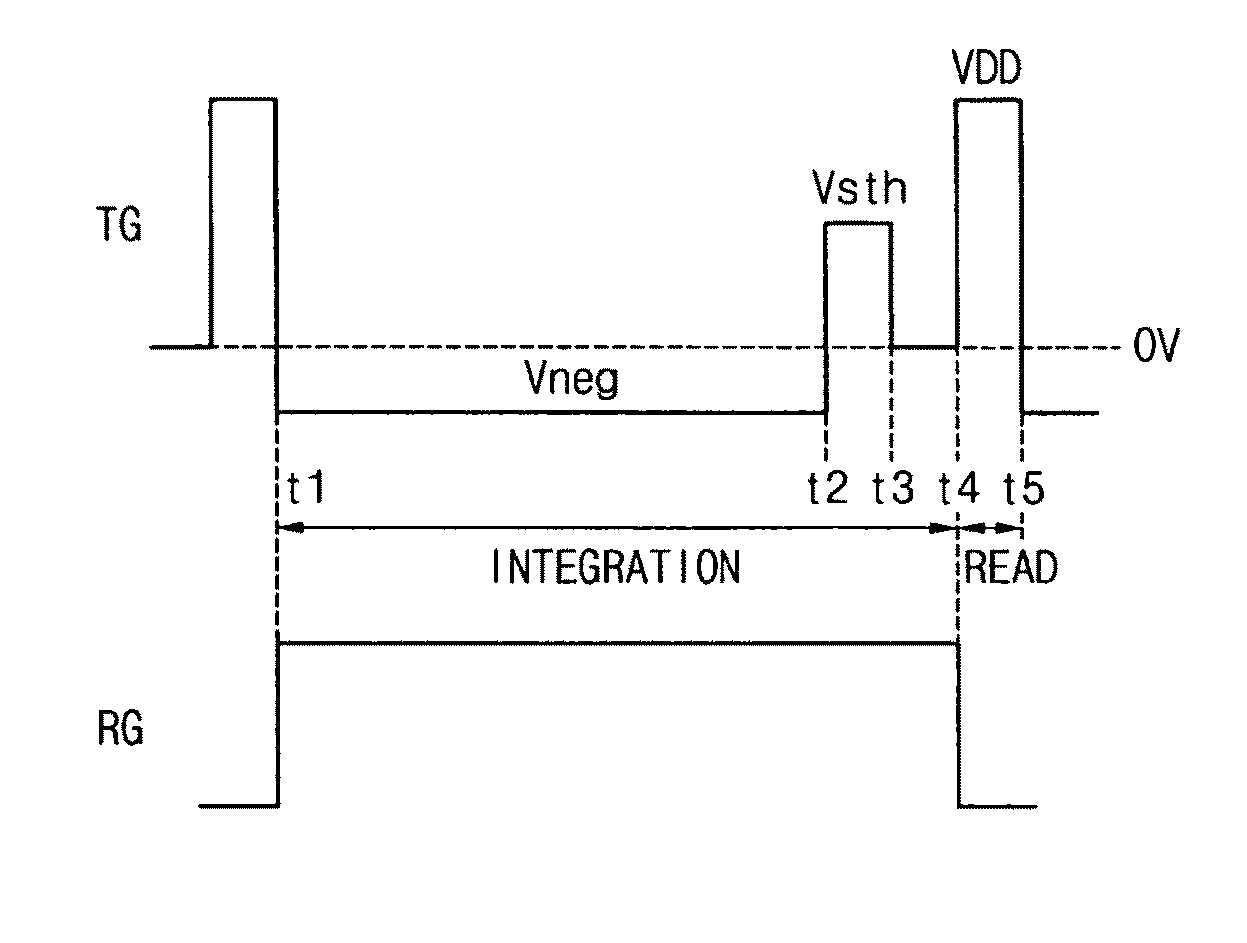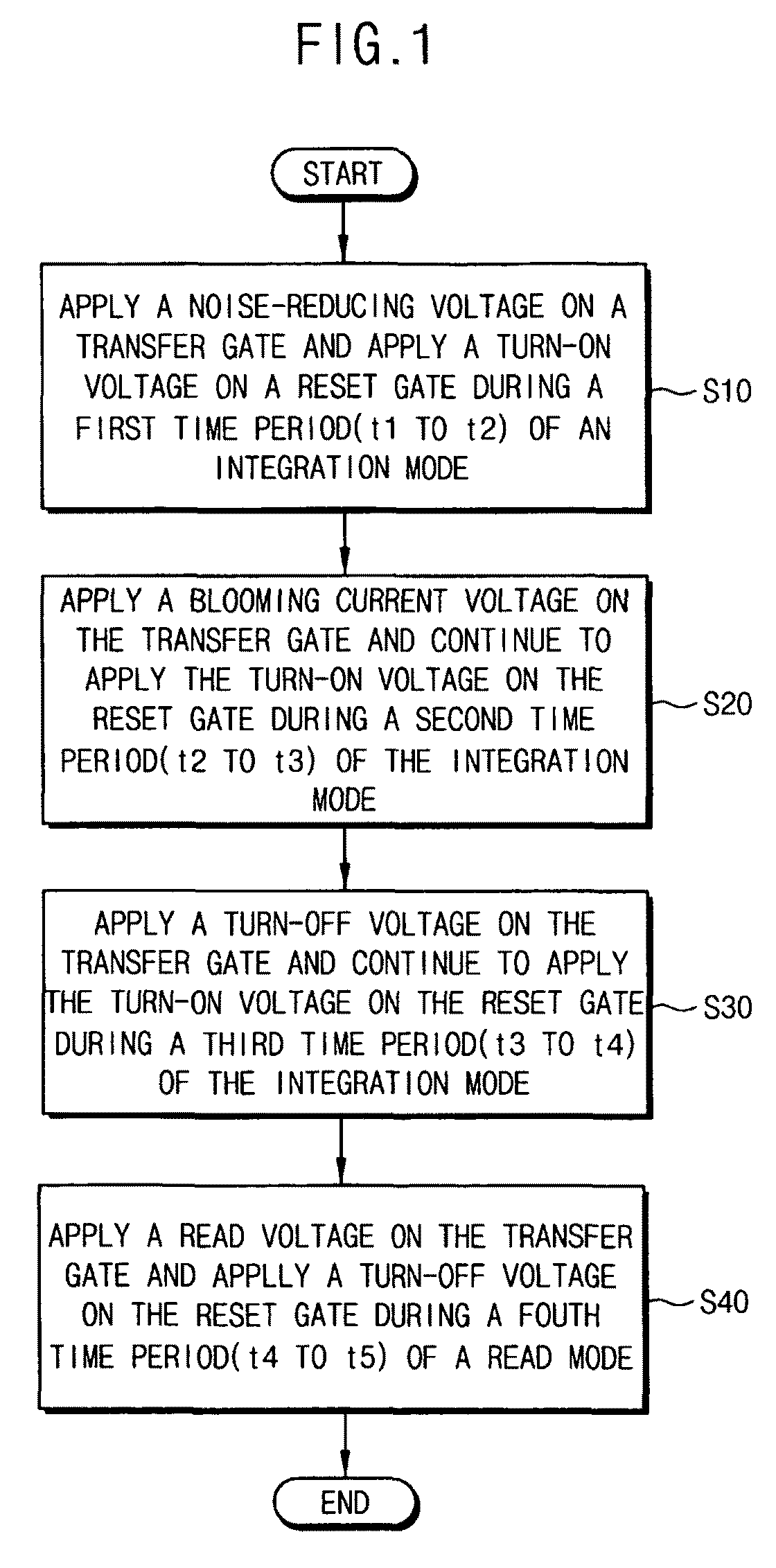Method of driving an image sensor with blooming current
a technology of image sensor and blooming current, which is applied in the field of driving image sensors, can solve the problems of limiting the dynamic range of linear image sensors, and increasing the size and cost of image sensors, so as to achieve the effect of minimizing the noise in the pixel of image sensors
- Summary
- Abstract
- Description
- Claims
- Application Information
AI Technical Summary
Benefits of technology
Problems solved by technology
Method used
Image
Examples
Embodiment Construction
[0039]Example embodiments of the present invention are described herein with reference to the accompanying drawings. However, the present invention may be embodied in many different forms and should not be construed as limited to the example embodiments set forth herein. Rather, these example embodiments are described so that this disclosure is thorough and complete for fully conveying the scope of the present invention to those skilled in the art. In the drawings, the sizes and relative sizes of layers and regions may be exaggerated for clarity. Like numerals refer to like elements throughout.
[0040]It will be understood that, although the terms first, second, third etc. may be used herein to describe various elements, these elements should not be limited by these terms. These terms are used to distinguish one element from another. Thus, a first element discussed below could be termed a second element without departing from the teachings of the present invention. As used herein, the...
PUM
 Login to View More
Login to View More Abstract
Description
Claims
Application Information
 Login to View More
Login to View More - R&D
- Intellectual Property
- Life Sciences
- Materials
- Tech Scout
- Unparalleled Data Quality
- Higher Quality Content
- 60% Fewer Hallucinations
Browse by: Latest US Patents, China's latest patents, Technical Efficacy Thesaurus, Application Domain, Technology Topic, Popular Technical Reports.
© 2025 PatSnap. All rights reserved.Legal|Privacy policy|Modern Slavery Act Transparency Statement|Sitemap|About US| Contact US: help@patsnap.com



